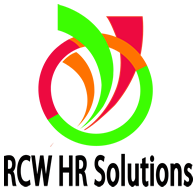How should quoted companies comply with the new requirement in the UK Corporate Governance Code to engage with their workforce?
Broadly, under the UK Corporate Governance Code, quoted companies are expected to perform two specific duties:
- Ensure the views and concerns of the workforce are taken into account by the directors, particularly when they are making decisions that could affect the workforce.
- Feed back to the workforce on what steps have been taken to address their concerns or to explain why particular steps have or have not been taken.
For companies that are used to engaging with their workforce only occasionally, or on an ad hoc basis, the new requirements will represent a significant change.
When deciding what would be most likely to promote the success of the company, a director must consider the interests of the company’s employees. Quoted companies are likely to already have mechanisms in place to gauge the views of the workforce. However, such mechanisms may be used only occasionally. Companies with a unionised workforce are likely to have more sophisticated mechanisms in place.
Companies with more than 250 UK employees must include in their directors’ report a summary of how the directors have engaged with employees.
The new code
The code places greater emphasis on areas such as workforce and shareholder engagement, corporate culture, board succession and diversity and remuneration. Provision 5 requires the board to understand the views of the company’s key stakeholders and describe in the annual report how their interests have been considered in board discussions. For this purpose, the board should engage with the workforce using one or a combination of the following three methods:
- A director appointed from the workforce.
- A formal workforce advisory panel.
- A designated non-executive director (NED).
If the board does not choose one or more of these methods, it must explain in the annual report what alternative arrangements it has put in place. In this context, ‘workforce’ has a broad meaning, covering both individuals with a formal employment contract and other workers affected by the decisions of the board, such as agency workers. If a director appointed from the workforce is chosen, these issues will need to be addressed:
- The individual will be subject to the same legal duties and responsibilities as other directors. They will be particularly expected to bring the views and experiences of the workforce into the boardroom.
- They will need to keep information provided to the board confidential, unless the board agrees otherwise.
- They will need to have the appropriate knowledge and skills to be effective as a director.
- The company may need to provide specialist training and support.
- The company will need to put in place procedures for the workforce to select the individual and for them to be appointed to the board.
Designated NED
Many small and mid-sized quoted companies will choose the designated NED. Their role is to help ensure the views and concerns of the workforce are brought to the board and taken into account. They will need to:
- Understand the concerns of the workforce.
- Articulate those views and concerns in board meetings.
- Ensure the board, and particularly the executive directors, take appropriate steps to evaluate the impact of proposals and developments on the workforce and consider what steps should be taken to mitigate any adverse impact.
- Feed back to the workforce on board plans. The designated NED should not be expected to take on responsibilities that are properly those of an executive director or the HR team. The designated NED should probably not be involved in the company’s whistleblowing procedure.
AIM companies
Most AIM companies choose to report against the Corporate Governance Code published by the Quoted Companies Alliance (QCA Code). Principle 3 of the QCA Code requires companies to “take into account wider stakeholder and social responsibilities and their implications for long term success”. Boards need to “identify their stakeholders and understand their needs, interests and expectations”; and the company should disclose in its annual report and publish on its website details of “how it has obtained feedback from stakeholders and the actions that have been generated as a result of this feedback”.
AIM companies following the QCA Code must therefore put in place one or more mechanisms to understand the views of the workforce. AIM companies are not required to engage with their workforce using one or a combination of methods prescribed by the code, although they may of course choose to do so.
